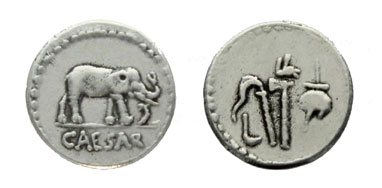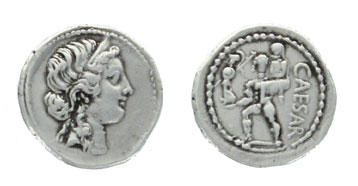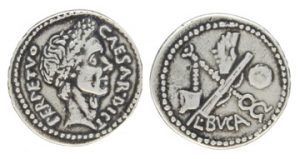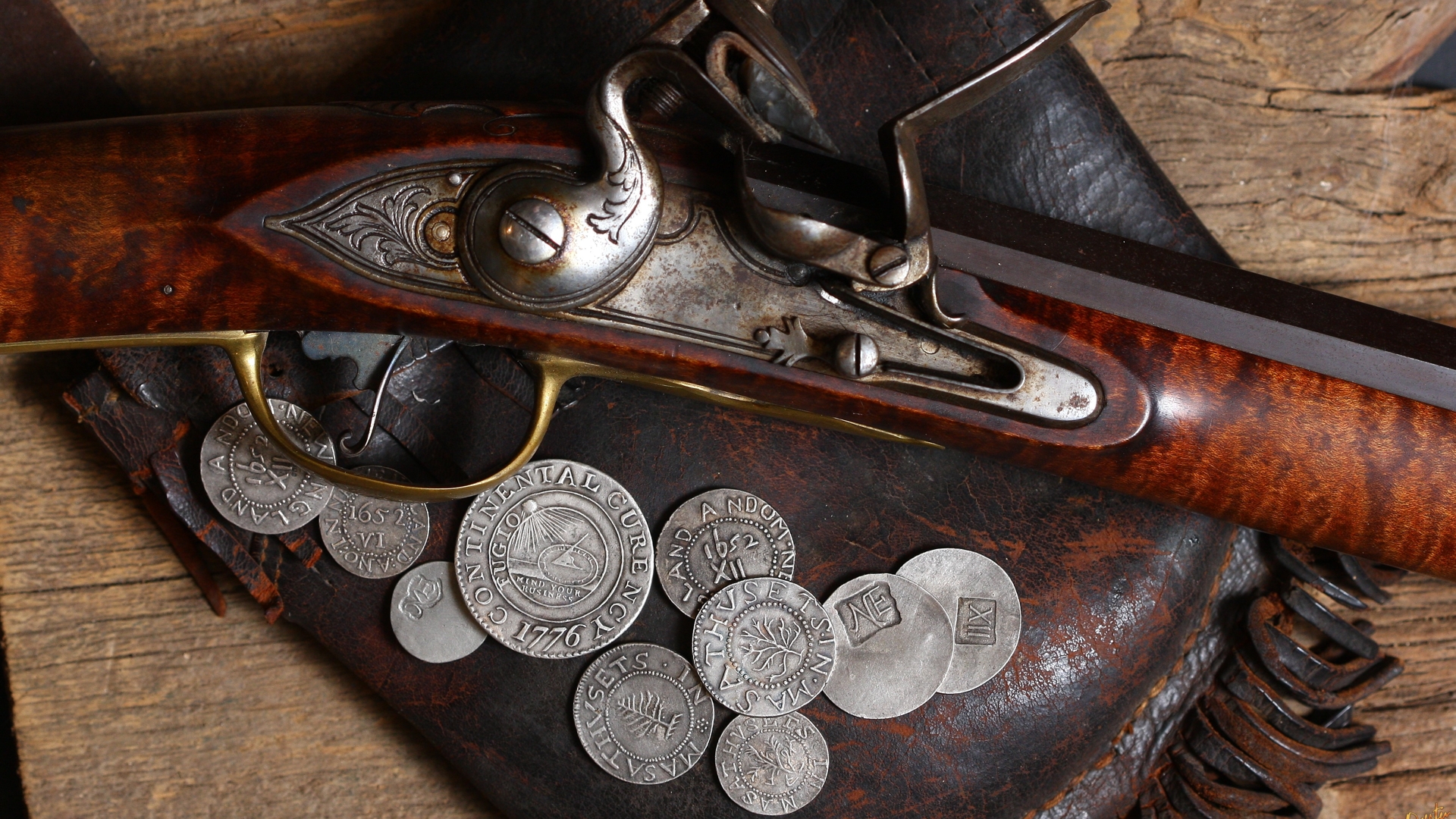Julius Caesar was born on July 13th, 100 BC, his family claimed descent from the Roman goddess Venus and the founder of Rome, Aeneas. In 59 BC Caesar was appointed governor of Gaul and spent eight years of military campaigns against the Gallic tribes there. The war took place from 58 BC to 50 BC and ended at the Battle of Alesia in 52 BC.
Caesar’s early coins depict the success of his military campaigns in Gaul, Spain, and North Africa.

CAESAR in exergue, elephant right, trampling on serpent, Simpulum, sprinkler, axe and priest’s cap, 49-48 BC
Caesar was in Sicily in late 47 BC preparing his army for an assault on Scipio and Pompeians forces. During this time a small number of denarii were produced in Caesar’s name
by Aulus Allienus, proconsular governor of Sicily. This issue is one of the rarest in the Caesarian series. Venus on the obverse appears for the first time on Caesar’s coinage.
On the reverse Trianacrus, reputedly a son of Neptune and the deity of Sicily. Having the name of one of his his lieutenants in addition to his own on a coin was unusual.

C CAESAR IMP COS ITER, Diademed and draped bust of Venus right , A ALLIENVS PRO COS, Trinacrus standing left, foot on prow, holding triskeles, 47 BC
The next coin below was struck by Caesar during the battle against the remnants of Pompey’s forces led by Metellus Picus Scipio, Cato the Younger, and Juba. (who all committed suicide after Caesar’s victory)
Venus on the obverse advertises the Julian family’s lineage which supposedly stretched back to the love goddess’s coupling with the Trojan hero Aeneas.
On the reverse is a scene from Greco-Roman mythology. Aeneas fleeing the flames of Troy caring his aged father Anchises on his shoulder and rescuing the sacred Palladium which would find a new home in Rome.

Diademed head of Venus right, CAESAR, Aeneas walking left, carrying Anchises and the Palladium 47-46 BC
Caesar was the first Roman politician to strike coins with his own portrait during his lifetime; Romans felt that portraits of living people shouldn’t appear on their coinage.
In 44 B.C. Caesar became dictator for a term of 10 years and then ultimately dictator perpetuo (dictator for life). This new title was displayed on silver denarii in early 44 B.C. These coins feature the wreathed portrait of Caesar, a token of his established power and authority.

CAESAR DIC. PERPETVO, Laurel head of Julius Caesar – L. BVCA., Winged caduceus, laid across the consular fasces, an axe, two hands joined, and a globe. 44BC


